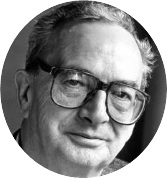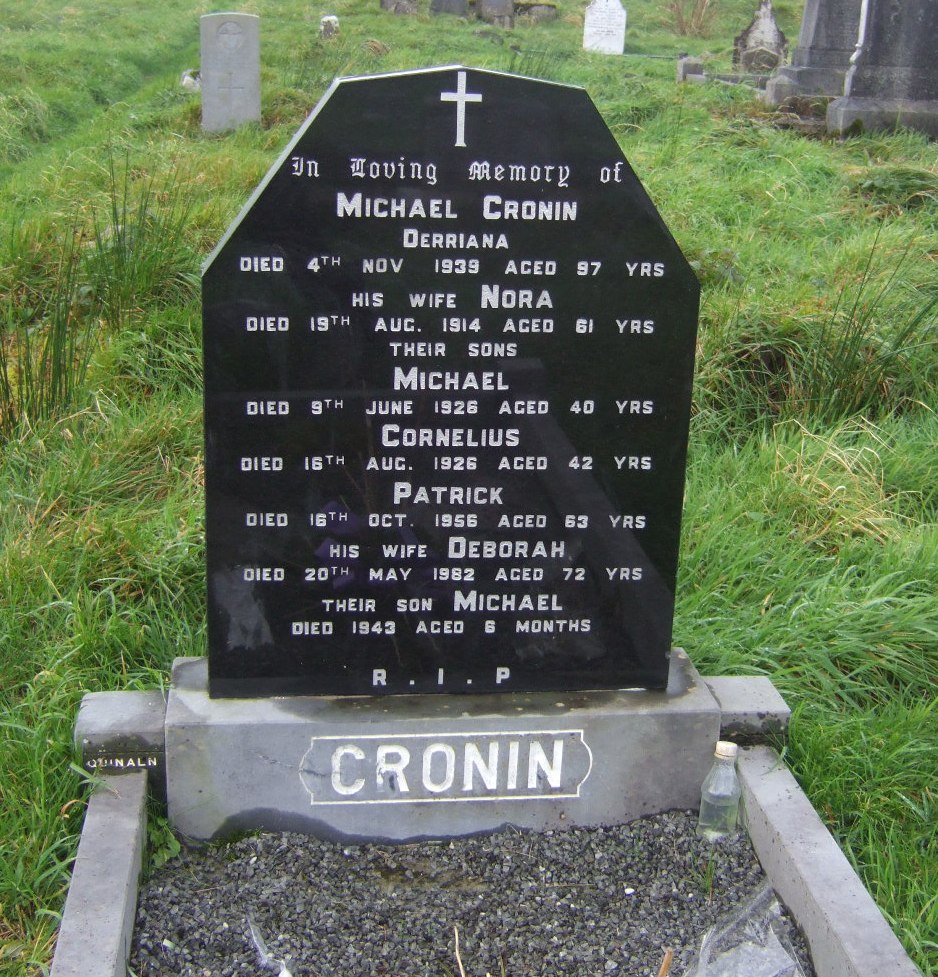Sean Cronin (1920 - 2011)
Irish Republican, IRA Chief of Staff, Writer, Journalist, Irish Times Washington DC Correspondent
 Seán Cronin was born in 1920
to Con and Katie Cronin in Ballinskelligs,
Co. Kerry in Ireland . Sean's father, who was a
veteran of the War of Independence, died when
Sean was four years old.
Seán Cronin was born in 1920
to Con and Katie Cronin in Ballinskelligs,
Co. Kerry in Ireland . Sean's father, who was a
veteran of the War of Independence, died when
Sean was four years old.
Ballinskelligs is located in the picturesque Inveragh Peninsula in South Kerry. Nestled on the shores of Ballinskelligs Bay and surrounded by mountains it was the idyllic playground for Sean during his carefree childhood years. It was a place where a child could let his or hers' imagination run free and dream dreams. A rich foundation for a fruitful and adventurous life.
Apart from its beauty South Kerry was a bastion of Republicanism. Many brave and committed Republicans hailed from there including Con Keating, Tim Keating, Denis Daly, John Clifford , Michael Curran, Patrick Foley, Jeremiah Keating, Patrick Lynch, Sean T. O Sullivan, John Sugrue and Sean's own father are but a few of the many who fought for the Irish Republic proclaimed in 1916.
These were the surroundings and influences that would have the greatest influence in shaping and guiding Sean's life journey.
After finishing his schooling Seán worked for the Kerry County Council until December 1941 when he joined the Free State army. By the time he left the army in 1948 he was a commissioned officer.
After leaving the Free State Army Sean emigrated to the United States where he trained as a journalist. He became associated there with the Clan na Gael and IRA Veterans of America which dated from the Fenian period in 1867. During this time he wrote articles for the Irish Republican organ in Ireland and developed a keen interest in Irish history.
Following the Armagh and Omagh arms raids by the IRA in 1954 and the election in 1955 of two prisoner-candidates in Fermanagh-South Tyrone and in Mid-Ulster Seán Cronin returned to Ireland to take part in the developing struggle. He was promoted rapidly through the ranks of the Irish Republican Army and in 1956 was appointed Director of Operations on General Headquarters Staff. At this time he authored the famous booklet “Notes on Guerrilla Warfare” and was responsible for the “Battle School” which trained selected Volunteers as leaders. They would later in turn train local units.
He drafted the strategic document “Operation Harvest” which was a pilot scheme for a military campaign against British Occupation forces in the Six North-Eastern Counties. This blueprint was accepted by the Army Council and later amended in keeping with local circumstances.
His finest hour was yet to come. That was in July and August 1957 when he and his comrade on GHQ Staff, Charlie Murphy, escaped the internment net and incarceration in the Curragh Concentration Camp. While “on the run”, they re-organized the Resistance Campaign in the Six Occupied Counties. Cronin edited An t-Eireannach Aontaithe/The United Irishman and engaged in a war of words with deValera who was attempting to justify his concentration camp policies.
In the Autumn of 1957 he was appointed IRA Chief of Staff. In the months that followed he led from the front by taking part in operations in the Six Counties and also in an arms raid in England itself. In November 1957 a successful General Army Convention was held to consolidate the structure of the organization. The Campaign was maintained throughout all of this and Seán Cronin evaded the 26-County Special Branch as it hunted for him night and day. Finally at the end of September 1958 he was arrested in Dublin and sent to the Curragh.
He was to spend the last five months of that concentration camp’s existence interned there without trial. On his release his advice on the dispute which arose in the camp was wise indeed. He posed the question: “is the Republican Movement a self-perpetuating religious sect, or is it the instrument of the freedom of Ireland?” If the former it was a time for discipline at all costs, he said. At the ensuing General Army Convention, Seán Cronin was again returned as Chief of Staff. He also resumed as Editor of the United Irishman.
During 1959-60 Seán was again on operational active service north of the Border. In June 1960 he was arrested a third time and given a six month sentence for “not accounting for his movements”. On his release he found that charges had been made against him from America. A Court of Inquiry found these charges to be groundless and he was co-opted back on to the Army Council. Cronin refused to accept membership because he felt support from America would be cut off if he emerged as a leading figure again. The other six members disagreed but Seán insisted in his refusal.
In the outcome there was no further support from America so both Cronin and the American support were lost to the leadership. However Seán did work for GHQ right up to the end of the Resistance Campaign in 1962. Commenting on the “termination of the campaign that began on December 12, 1956”, Cronin said that there “should always be military resistance to the British occupation of the Six Counties”.
A few years later Seán Cronin returned to the United States. For more than 20 years he was the Washington Correspondent of the “Irish Times”. In its obituary that newspaper described his work as “meticulously precise as a reporter” and his Washington Letter as a “must read”. He was a writer, public speaker, lecturer, political analyst and military person who could turn his hand to most things. Above all he was a leader of men who led from the front.
Those who served with him in the Republican Movement in the years 1955-65 can attest to his fair-mindedness and sense of justice. Mná Tí in the houses where he was billeted spoke highly of him as “a gentleman” who did his utmost not to put the household under pressure. A socialist who supported women’s liberation he could always see the broad sweep of affairs and the consequences of actions.
Sean Cronin had above all the ability to inspire people, by word and by example. Today his life of service to the cause of Irish national independence inspires us. For those who came of age in succeeding years, he has left the valuable legacy of his writings.
Seán was the author of many books and pamphlets including The McGarrity Papers; The Search for the Republic (a biography of Frank Ryan); Irish Nationalism, a history of its roots and ideology; Young Connolly (an account of James Connolly’s youth); Our Own Red Blood (about the 1916 Rising); Washington’s Irish Policy 1916-1986 Independence, Partition, Neutrality; Kevin Barry; Resistance (The story of the struggle in British-occupied Ireland); Ireland since the Treaty and An appeal to Unionists, The latter three were written under various nom-de-plumes.
He died on March 9. 2011 in Maryland in the United States
By: Tomas O Coisdealbha
Acknowledgment
With the exception of the first few paragraphs this biography incorporates verbatim the words of Ruairi O'Bradaigh's oration delivered at Sean's graveside by Ruairi son, Maitiú on September 17, 2011.
CEMETERY
NAME: Dromid Cemetery
ADDRESS: Caherciveen, Co. Kerry, Ireland
THE CRONIN FAMILY GRAVE

Sean Cronin's ashes were interred in the Cronin family grave on September 17, 2011.

